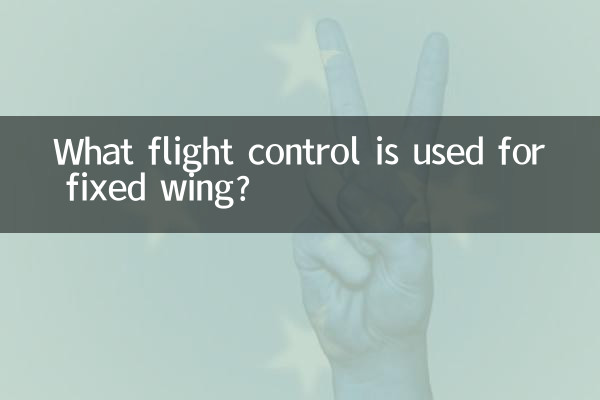What flight control is used for fixed wing? Full analysis of popular flight control systems in 2024
In the field of drones and model aircraft, the flight control system of fixed-wing aircraft is one of the core components, which directly affects flight performance and function expansion. This article will combine the hot discussions on the Internet in the past 10 days to sort out the current mainstream fixed-wing flight control systems and their characteristics.
1. Ranking of popular fixed-wing flight control systems in 2024

| Ranking | Flight control model | Manufacturer | Core features | Reference price (yuan) |
|---|---|---|---|---|
| 1 | Pixhawk 4 | Holybro | Open source system, supports multiple flight modes | 1200-1800 |
| 2 | Matek F405-WING | Matek | Optimized for fixed wing, lightweight design | 600-900 |
| 3 | iNAV Flight Controller | iNAV | High cost performance, suitable for entry-level | 400-700 |
| 4 | ArduPilot Mega 2.8 | 3DR | Mature and stable, strong community support | 800-1200 |
| 5 | BetaFlight F7 | BetaFlight | High performance, suitable for racing | 700-1000 |
2. Suggestions on flight control selection in different scenarios
1.Getting started for beginners:It is recommended to choose iNAV or Matek F405-WING, which is affordable and easy to debug.
2.Professional aerial photography:The Pixhawk series is the first choice, supporting a variety of sensors and extended functions.
3.Racing flight:The high refresh rate and low latency features of the BetaFlight series are more suitable.
4.Long endurance applications:ArduPilot's route planning function is more mature and stable.
3. Recent hot topics of discussion
According to the hot discussions on the Internet in the past 10 days, the following topics have received the most attention:
1.The rise of domestic flight control:The flight control performance launched by many domestic manufacturers is close to that of international first-tier brands.
2.AI assisted flight:The new generation of flight controls begins to integrate machine learning algorithms to improve autonomous flight capabilities.
3.Popularity of RTK positioning:Centimeter-level positioning technology is gradually becoming a standard configuration for high-end flight controls.
4.The debate between open source and closed source:Community discussions on the openness of flight control systems continue to heat up.
4. Comparison of key parameters when purchasing flight controls
| parameters | importance | ideal value | Remarks |
|---|---|---|---|
| Processor frequency | high | ≥168MHz | Affects computing power |
| Number of IMUs | in | ≥2 | Redundant design is safer |
| PWM output channel | high | ≥8 | Support multiple servos control |
| Built-in barometer | high | required | High level of control basics |
| GPS support | in | required | Positioning and navigation basics |
5. Forecast of future development trends
1.Higher degree of integration:The new generation of flight controllers will integrate more sensors and communication modules.
2.Intelligent flight:AI-based autonomous decision-making capabilities will become standard.
3.5G interconnection:High-speed data transmission supports more complex remote control scenarios.
4.Security improvements:Hardware-level encryption and anti-jamming technology will be enhanced.
When choosing a fixed-wing flight control, it is recommended that users consider it based on actual needs, budget and technical level. For most enthusiasts, mature open source systems such as Pixhawk or iNAV are good choices, which can not only meet basic needs but also have rich community resource support.

check the details

check the details